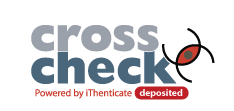Skin Grafting in Post Burn Contractures of Groin and Perineum in Patients
DOI:
https://doi.org/10.48047/Keywords:
Groin, Perineum, Skin Grafting, Z-plasties, Post burn contractures.Abstract
Background:Burn scar contractures are severely disfiguring, painful, and itching. As such
thing, patients with burn scar contractures which interfere with activities of daily living are
often marginalized and experience difficulties in receiving education and securing work.
There are a number of therapies to reduce contractures including intra-lesional corticosteroid
injection, antihistamines, hydrotherapy, dynamic or static splinting, laser therapy,
compression therapy, and surgical excision and reconstruction.Material and Methods:This
is prospective and single center study conducted in the Department of Surgery at
Maheshwara Medical College & Hospital from1
st September 2020 to 4th September 2021. All
patients were subjected to surgery under general anaesthesia and the following operative
procedures were performed: (1) release of contracture with split thickness skin grafting (2)
release of contracture and closure by multiple Z-plasties.Results:In our study, 72.5% of the
patients, post burn contractures of the groin and perineum were because of Open chulla.
Other less common causes were hot water (17.5%) and flame burn (10.0%). Majority of the
patients were brought with complaints of difficulty in squatting (80.0%) followed by
limitation of movements of hip joints (77.5%) and (52.5%) impairment of walking. In our
series of 40 patients two types of operative procedures were performed: (1) release of
contracture with split thickness skin grafting; (2) release of contracture and closure by
multiple Z-plasties. Moreover, 19 (47.5%) patients having bilateral groin contractures
underwent release of contracture with split thickness skin grafting. 17 (42.5%) patients
underwent release of unilateral groin contracture with split thickness skin grafting and 3
(7.5%) patients underwent release of unilateral groin contracture and closure by multiple Zplasties.Conclusion:Functional outcome was satisfactory in 93.3% patients; their squatting,
walking, gait, and movements of the hip joints were improved and patients were able to
perform all day to day activities of life and essential that require sitting or squatting position.











